Come join us now, and enjoy playing your beloved music and browse through great scores of every level and styles!
Can’t find the songbook you’re looking for? Please, email us at: sheetmusiclibrarypdf@gmail.com We’d like to help you!
Table of Contents
Kenny Barron – New York Attitude (1984) Jazz
Please, subscribe to our Library.
If you are already a subscriber, please, check our NEW SCORES’ page every month for new sheet music. THANK YOU!
Tracks:
1 New York Attitude 00:00 2 Embraceable You, Take 2 06:00 3 Joanne Julia 11:51 4 My One Sin 17:31 5 Bemsha Swing 22:56 6 Autumn In New York 29:49 7 Lemuria 37:51 8 You Don’t Know What Love Is 43:03 9 Embraceable You, Take 1 49:32
Credits: Bass – Rufus Reid Drums – Frederick Waits Piano – Kenny Barron Recorded December 14, 1984 at Van Gelder Recording Studios, Englewood Cliffs, N.J.
Kenny Barron. “The poetry of the piano” (Jazz)
For a jazz pianist, facing the piano face to face is an intense exercise in reflection, a reckoning with his baggage in music, a profound internalization process and, above all, a conversation with himself or Conversations with Myself (Verve, 1963), the famous album by Bill Evans, the jazz impressionist, an experience that he would repeat on albums such as Further Conversations with Myself (Verve, 1967), Alone (Verve, 1968), Alone Again (Fantasy, 1975) or New Conversations (Warner, 1978).

Keith Jarrett, a great fan of this kind of face to face with the piano to the point that it could be said that it was his usual mode of expression, has left us excellent albums, among others, The Köln Concert (ECM, 1975), the monumental Sun Bear Concert (ECM, 1978) or the recent Budapest Concert (ECM, 2020) recorded in 2016.
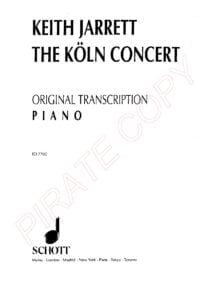
But this tour de force in front of the piano has a rich tradition in the history of jazz and all the great pianists walked this solitary path that allows an inner exploration with infinite possibilities, a continuous process of improvisation in which the usual question / answer happens in the limitless imagination of the musician.
Best Sheet Music download from our Library.
Just a few examples of pianists who throughout the history of jazz plunged into the creative solitude of the solo piano. The recognized virtuoso and master of all those who came after Art Tatum in the compilation Piano Solo (Capitol, 1972) that includes various sessions from 1949 —memorable version of Dvořák’s “Humoresque”—or in the series The Tatun Solo Masterpieces Vol 1 (Pablo , 1953). He also did numerous takes on the great Fats Waller collected on the Fats Waller Memorial 5 Lps Casket (RCA Victor, 1969).
Bud Powell, seminal foundation of bebop and modern jazz on numerous tracks on The Genius of Bud Powell (Mercury, 1956). Another of the basic pillars of modernity like Thelonious Monk in albums like Solo Monk (Columbia, 1965) or Piano Solo (Vogue, 1954).
Mainstream pianists ( also wanted to confront themselves in solo dialogue: Mal Waldron — Searching in Grenoble: The 1978 Solo Piano Tompkins Square, 2022) or All Alone (GTA Records, 1966) —, the elegant and lyrical Tommy Flanagan — Solo Piano (Storyville, 1974) or In His Own Sweet Time (Enja, 2020) recording rescued from a concert at the German town of Neubur in 1994; Kenny Drew, Everything I Love. Solo Piano (SteepleChase, 1973); Ray Bryant, Alone with the Blues (New Jazz, 1958); Errol Garner in the series for Decca, Errol Garner playing Piano Solos or Hank Jones, Have You Met Hank Jones (Savoy, 1956) are just a few examples.
But also contemporary pianists like Paul Bley, Solo Piano (SteepleChase, 1988); Fred Hersch —the triple album Songs without Words (Nonesuch, 2001) and Solo Piano (Palmeto, 2015)—; Brad Mehldau, Solo piano. Live in Tokyo (Nonesuch, 2004); Marc Copland, John (Illusions Mirage, 2020), tribute to guitarist John Abercrombie who died during the pandemic or the historic German pianist Joachim Kühn, Touch the Light (ACT, 2021) reviewed his jazz musical influences but also classical and pop music and nationally pianists such as Tete Montoliou, Solo piano (Timeless, 1989) compilation of the albums Y yellow Dolphin Street (1977) and Catalonian Folksongs (1978) or the young and versatile Marco Mezquida, La hora fertile (Whatabout Music, 2013), among many others.
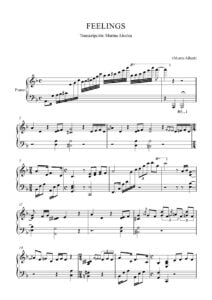
And the great Barry Harris, custodian and champion of the bop tradition, could not be missing from this brief account —some consider it a kind of compendium of three of the most influential representatives of modern jazz: Parker, Monk and Powell and a renowned educator of jazz. so many talents that in albums like Listen to Barry Harris: Solo Piano (Riverside, 1961) or the most recent Solo (September, 1990) recorded in the Dutch Studio 44 and in which he makes an extensive tour of the modern jazz tradition through 15 songs, three originals (That Secret Place, So Far, So Good and Tribute to the Duke), readings by Monk (Monks Mood, Ruby my Dear and Blue Monk), by Powell (Hallucinations) and well-known classics by Rodgers, Youmans, Kern or Noble.
Harris precisely quoted Kenny Barron when asked about a young pianist he liked, they insisted on being young and reiterated, “Barron, of course!” Finding out soon after, Kenny was pleased that he will think of him as a young pianist, “even though I’m my years now, even though Barry is a lot older than me.”
Together they led the great album Confirmation (Candid, 1992) as a quartet with Ray Drummond and Ben Riley in the rhythm section, a gathering of teachers recorded at the Riverside Park Arts Festival on September 1, 1991.
Facing the piano alone could well be that feeling of “feeling that you are in the zone , a special place where everything works, heart, mind and technique”, as Fred Hersch wrote in the Solo album liner notes .
And, of course, Kenny Barron wanted and knew how to sink in front of the lacquered mirror of the piano, with all the respect that a dialogue of such magnitude implies:
«The solo piano has always scared me. That is number one. But the only way to deal with it is to deal with it, you know! […] It’s an opportunity for me to challenge myself at every concert and, at the same time, be aware that I’m not Art Tatum. Because sometimes that’s in the back of your mind. At the human level. Maybe I’m not doing enough. Maybe I’m not bright enough.
That’s still on your mind. So I’m trying to get to the point where that’s like a noise I can forget about. Don’t even worry about it. Worrying about that kind of thing, or how to stop worrying about it. But then again, the only way to stop worrying about it is to face it all the time. Just tell my story, whatever it is. And I think people respond, if you’re honest.” Interview by Peter Hum, Ottawa Citizen (06.20.2017)
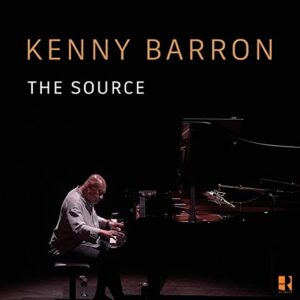
An impressive number of recorded albums —“about 500 as accompanist, or maybe 400”, he once said, and fifty as leader or co-leader—… and yet it is surprising that he has only recorded two solo piano and forty years apart. The first, At the Piano (Xanadu, 1982), includes an excellent mixture of jazz classics and originals that, then, when he was in his forties, were part of his musical spirit baggage.
Seven songs for his solo piano debut, three of his own —“Bud-Like” as a tribute to the seminal Bud Powell, the rapturous “Calypso”, perhaps a Rollian wink and a memorable “Enchanted Flower”— and the rest are a must. Fulfillment for any pianist, the timeless ballad “Body and Soul”, the necessary Ellington-Strayhorn path in “The Star-Crossed Lovers” and, of course, Monk, another of his great influences: “Misterioso” and “Rhythm-a-Ning”. ”. High point, then, in his recording career, Robert Taylor pointed out in Allmusic .
Now, at eighty and forty years later and, perhaps, in a sort of reckoning or testimonial legacy, The Source (Artwork, 2023) leaves us, recorded in July 2022 at the Theater de L’Athénée Lousi Jovert from Paris. As in At the Piano, it includes well-known own compositions —“What If”, “Dolores Street”, “Sunshower” and “Phantoms”), readings by Monk (“Teo”, “Well You Needn’t”), revisits the Ellington-Strayhorn duo (“Isfahan,” “Daydream”) and a Great American Songbook classic (“I’m Confessin’”).
On both albums, Barron establishes a lively connection with the listener to offer a musical discourse that is not forced, oblivious to any sense of pretense, in order to navigate various stylistic currents with the utmost elegance and virtuosity —from straight ahead jazz, classics, blues , bossa nova and even free improvisation—which attest to why he is considered one of the masters of jazz in history. “Album that could have been titled Kenny Barron: All The Things You Are “, Ed Enright has written in Downbeat (January 2023)… Indeed, everything that is.
A long and intense journey: musical biography
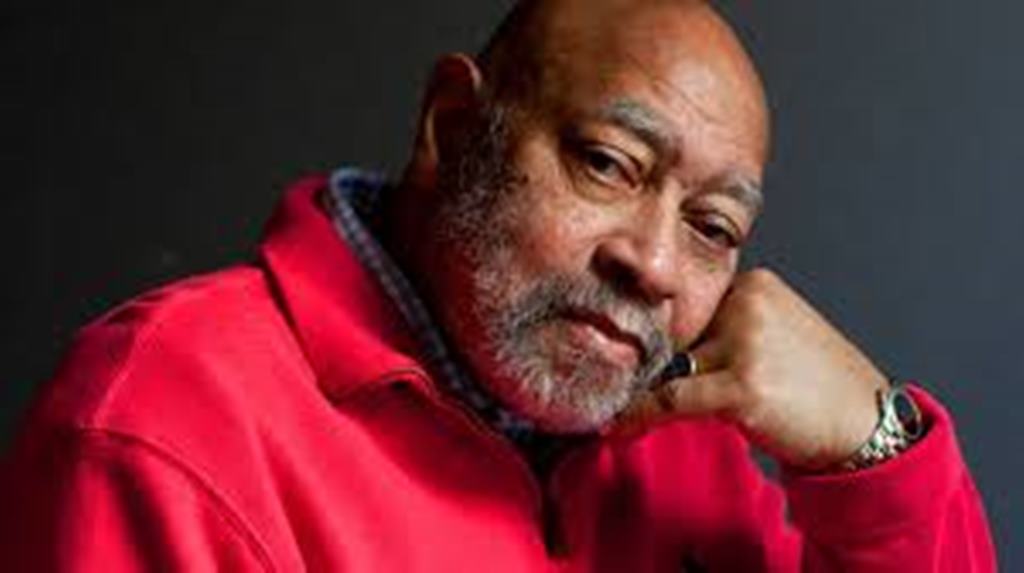
Eighty years old is Kenny Barron (Philadelphia, Pennsylvania, 1943). He began playing the piano at the age of six — “it was compulsory at home and my mother made me study classical piano until I was 16” — among his teachers, Vera, the sister of Ray Bryant, also a pianist and a native of Philadelphia, a prodigal city in jazzmen : Benny Golson, Tommy Bryant, Philly Joe Jones, Bobby Timmons, Archie Shepp, Lee Morgan, Hank Mobley, among others. See the good ear or that he was good at it…
«I became interested in jazz thanks to my brother Bill, a saxophonist, who had records by Charlie Parker, Dizzy, Dexter Gordon… And in Philadelphia there was also a 24-hour jazz station. My brother took me to my first concert with his band when he was 14 [with Mel Levin’s local band] and we played standards and pieces from the big bands. Then I moved to New York in 1961, which was a fantastic place at the time. That’s how it all started.”
While still in high school he worked with drummer Philly Joe Jones. And at the age of 19 he moved to New York starting a dizzying career as a freelance , accompanying musicians such as drummer Roy Haynes, trumpeter Lee Morgan or flutist and tenor sax player James Moody, after he heard him play at the Five Spot. Requested musician condition that he attributes:
«They call me because I can play well, empathy and the interpretation that one makes of the musical intentions of others also influences, I try to make everything easy, or so I think»
Key to his career was his entry in 1962 into trumpeter Dizzy Gillespie’s band on the recommendation of James Moody and without Dizzy hearing him play a single note. With Dizzy, in whose group he spent four years, he absorbed and developed a great knowledge and experience of the jazz language as well as an appreciation for Latin and Caribbean rhythms that he would later reflect on albums like Sambao or Canta Brasil .
«I joined his band at the age of 19, what am I going to say, he was a great human being and one of the greatest learning experiences I have had […]. Foremost, Dizzy was very easy to get along with. He wasn’t a dictatorial boss type, just a really nice guy. And he was very generous with his knowledge. He knew a lot about chords and harmony, and he was very generous. He always shared. ‘Why don’t you try expressing this chord this way?’
He taught me things on the piano. And some nights, if the last set wasn’t full, he’d get me off the piano and play a song or two with Moody. He wasn’t a great soloist, but he did know the voices and things like that. And he also knew a lot about rhythms, especially Brazilian rhythms and Latin rhythms, and where they came from. What region of Cuba or what region of Brazil. And also nonmusical things about how to treat people. He always treated people with the utmost respect. In the four years that I was with him, I never saw him get angry.
After leaving Gillespie’s band, he worked with Freddie Hubbard, Stanley Turrentine, Milt Jackson and Buddy Rich. In the early 1970s, Kenny worked with the great saxophonist Yusef Lateef, whom Kenny credits as a key influence on his improvisational art. I knew Lateef from before, when he was still living in Philadelphia and with whom he had just finished high school, he played several concerts and contributed, not as a performer but as a composer and arranger, to their album The Centaur and the Phoenix (Riverside, 1960) with the original “Revelation” and an arrangement of the standard “Ev’ry Day (I Fall in Love)”.
It was Lateef who encouraged him to combine touring with a college education, earning a degree in music from Empire State College (New York). This is how Kenny spoke of Lateef:
“He was honest. When he said something, you could believe it. Musically, it was open and very liberating. He was not specific with the instructions. Just be on time and no drugs.”
His recording debut took place with the album The Tenor Styling of Bill Barron (Savoy, 1961) directed by his brother Bill and which included also with the trumpeter Ted Carson, the bassist Jimmy Garrison and the drummer Frankie Dunlop who was followed by others along with his brother such as Modern Windows or Hot Line . About his brother (1927-1989):
«My brother and I used to talk about music. He wasn’t a pianist, so he couldn’t teach me piano. But we talk a lot about music. We talked about some of the concepts of him and who he liked. He leaned a bit more to the left , in the sense that he liked Cecil Taylor, classical composers like Webern and Stockhausen. So he was into some experimental stuff. That was his musical inclination ».
A year of great independent recording activity was 1967. He co-directed the album You Had Better Listen with trumpeter Jimmy Owens and participated in recordings with trumpeter Freddie Hubbard and saxophonists Joe Henderson, Stanley Turrentine, Tyrone Washington, Booker Ervin and Eric Kloss.
His ever-expanding discography continued to expand into the ’70s, featuring sessions with saxophonists and flutists such as Moody and Lateef, bassists Ron Carter and Buster Williams as well as musicians such as Carl Grubbs, Marion Brown and Marvin ‘Hannibal’ Peterson. Throughout the 1970s he continued to work regularly with prominent musicians, broadening the stylistic range of his collaborations—Stan Getz, Chico Freeman, violinist John Blake, trombonist and singer Ray Anderson, and drummer Elvin Jones.

It was also the decade that marked the beginning of his career as a leader. Sunset to Dawn (Muse, 1973) their album His debut as a leader featured, among others, bassist Bob Cranshaw and drummer Freddie Waits and his own compositions such as “Sunset” or “Dolores Street”.
It was followed by albums such as Peruvian Blue (Muse, 1974), Lucifer (Muse, 1975), Innocence (Wolf Records, 1978) or Togheter (Denon, 1979) in a duet with pianist Tommy Flanagan and in which both maestros interpret six jazz classics. with a language loaded with swing and moments of improvisational brilliance. For Kenny Barron, Tommy Flanagan (1930-2001) was one of his great influences:
“My biggest influence was actually Tommy Flanagan, who I first heard during high school on a recording. What got me about Tommy was his touch and his lyricism, those two things. He had this very light, delicate touch, and when he touched it it was very, very logical. It was like speaking in sentences, with punctuation and all. That was my biggest influence. And then I discovered the influence of him, Hank Jones. So that particular style, that’s what got me.”
During the eighties he maintained his intense activity, touring and collaborating with other musicians and publishing twenty albums in various formats, among others, his first recording on solo piano — At the Piano (Xanadu, 1982) —; a duet with bassist Buster Williams — Two As One. Live at Umbria Jazz (Red Record, 1987) and with Red Mitchell — The Red Barron Duo (Storyville, 1988)—
Also a duo but alternating on double bass Ron Carter and Michael Moore — 1+1+1 (Blackhawk Records, 1986); a trio in Autumn in New York (Uptown, 1985) with Rufus Reid and Frederick Waits; in Scratch (Enja, 1985) with Dave Holland and Daniel Humair or in Landscape (Baystate, 1985) with Cecil McBee and Al Foster.
In the excellent Whatat If? (Enja, 1986) he performed as a quintet with trumpeter Wallace Roney, tenor sax player John Stubblefield, and Cecil McBee and Victor Lewis in the rhythm section including originals like “Phantoms,” “What If?” or “Voyage.”
He also founded the Sphere quartet with tenor saxophone Charlie Rouse, Buster Williams and Ben Riley, whose objective was to celebrate the music of Thelonius Monk and which remained active until Rouse’s death in 1988, publishing albums such as Four in One (Elektra , 1982 ), whose recording coincided by chance with the day of Monk’s death and therefore was not planned as a commemorative tribute and in which they perform outstanding readings of Monk’s classics.
It was followed by albums in which, although they do not cover Monk, their spirit is present, such as Flight Path , Sphere on Tour, Pumpkin’s Delight , Four for All and Bird Songs released the same year as Charlie Rouse’s death. The group met again with the alto sax Gary Bartz publishing the album Sphere (Verve, 1997).
Parallel to his work as a leader, he collaborated as a guest on numerous albums such as the one led by saxophonists Fran Foster and Frank Wess Franklin Speaking (Concord Jazz, 1985); in the collective tribute to trumpeter Clifford Brown, Time Speaks (Timeless, 1985) with Benny Golson, Freddie Hubbard, Woody Shaw, Cecil McBee, and Ben Riley, as well as in Moon Alley (Criss Cross Jazz, 1986) with the quintet led by trumpeter Tom Harrell and who also had a young Kenny Garrett as a guest.
The nineties were equally fruitful in terms of concerts and tours as well as collaborations and recordings, recording thirty albums under his name or as co-leader for labels such as Verve, Reservoir, SteepleChase, Red, Candid, Concord or Enja.

In trio format is the brilliant The Only One (Reservoir, 1990) with Ray Drummond and Ben Riley and a masterful tour of jazz classics and two Barron originals: “The Only One” and “Dolores Street”.
Excellent is People Time (Verve, 1992) a duet with tenor saxophone Stan Getz, recorded live at the Café Monmartre in Copenhagen in March 1991, three months before Getz’s death. Double album that includes 14 songs with memorable piano-saxophone dialogues. Later, the complete sessions were published in a 7 CD box: People Time: The Complete Sessions (Sunnsyde, 2010). It is appropriate to remember Barron’s special empathy with Getz, with whom he had previously collaborated with his quartet on tours and albums such as Anniversary or Serenit :
“Working with Stan Getz was also a great experience. We were sort of soul mates in the sense that we both liked lyricism and beauty. He had that sound that made you cry, especially when he played a ballad. We were on the same wavelength, I think.”
In Sambao (Verve, 1992) he brought together drummer Victor Lewis with Brazilian musicians —guitarist Toninho Horta, bassist Nico Assumpçao and percussionist Mino Cinelu— to pay homage to Brazilian rhythms through eight original compositions
In Other Places (Verve, 1993) together with Bobby Hutcherson, Ralph Moore, Rufus Reid, Victor Lewis and Minu Cinelu, he includes originals such as “Anywhere”, “Other Places”, “Mythology”, “Ambrosia” or “Nikara’s Song”.
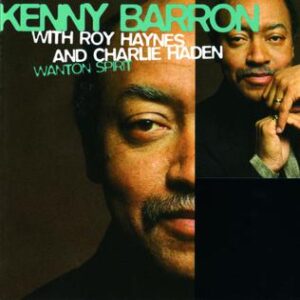
Wanton Spirit (Verve, 1994), a trio with Charlie Haden and Roy Haynes —which he considers one of his favorites— and nominated for a Grammy for best jazz instrumental performance, is a sign of maturity.
Critic Lee Bloom in his review for Allmusic noted: “Early influences from Tatum, Powell, Monk, plus Tommy Flanagan’s melody lines, McCoy Tyner’s pentatonic harmony and Herbie Hancock’s flowing rhythm have been completely absorbed by Barron. ».
Some recordings from this period are Things Unseen (Verve, 1997) in which he includes 8 of his own compositions, leading a band made up of John Scofield, John Stubblefield, Eddie Henderson, David Williams, Victor Lewis, Mino Cinelu and the Japanese violinist Naoko Terai. Together Again from the First Time (Red Records, 1997) is a collective album of great figures brought together by the Italian label: Jerry Bergonzi, Bobby Watson, Kenny Barron, Curtis Lundy, David Fink and Victor Lewis.
In The Artistry of Kenny Barron (Wave, 1998) with bassist Peter Ind and drummer Mark Taylor includes lively readings of jazz classics like Body and Soul or Lover Man and Monk originals (Rhythm-a.Ning, Well You Needn’ t).
Night and the City (Verve, 1998), recorded live at New York’s Iridium in September 1997, is an intense and reflective musical dialogue between Barron and bassist Charlie Haden that at times becomes disturbing through classics and originals by both.
Already established as a reference point for jazz piano, he faced the new century with renewed creative energy, alternating his work between tours and concerts, recordings and teaching work: in the year 2000 he left his position at Rutgers University, which he had held since 1974, to join the Julliard School of Music.

In his recordings, he alternates sessions as a duo or trio and with more extensive formations such as in Spirit Song (Verve, 2000), nominated for a Grammy and in which he appears as a septet with the trumpeter Eddie Harris, the tenor saxophone David Sánchez, the guitarist Russell Malone and in the rhythmic section Rufus Reid and Billy Hart and as a guest the young violinist Regina Carter.
And with Regina Carter he recorded a duet Freefall (Verve, 2001), a solid dialogue from which a coherent and joyous musical creativity springs. With Canta Brasil (Sunnsyde, 2002) he returns to Brazilian rhythms in the company of the Trio da Paz with originals like “Zumbi”, “Clouds” or “Thoughts and Dreams”.
Return to the quintet format with Images (Sunnsyde, 2004) now with vibraphone (Stefon Harris) and flute (Anne Drummond), an association that generates attractive and sweet music without falling into cloying and with a superb Barron both as interpreter and composer for the originals he contributes: “Images”, “So It Seems”, “Jasmine Flower! or “Inside Out”.
Back as a trio, in Superstandards (Venus, 2004) with bassist Jay Leonhart and drummer Al Foster, it is a brilliant exercise in reading traditional jazz classics but also modern jazz with originals by Rollins (“Doxy”) or Oliver Nelson. (“Stolen Moments”)
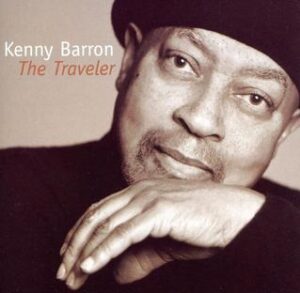
Four years later he published The Traveler (Sunnsyde, 2008) for which he enriched the sound palette with the incorporation of the West African guitarist Lionelk Loueke, a change of musicians —the soprano saxophone Steve Wilson, the drummer Francisco Mela and the now regular double bassist Kiyoshi Kitagawa. — and on some of the tracks the voices of Ann Hampton Callaway, Grady Tate and Gretchen Parlato. Perfect portrait of his repertoire with originals like “The Traveler”, “Um Bejio” or “Illusions” and, as always, Barron with his distinctive style full of swing and empathy.
With Minor Blues (Venus, 2009), he returned to the expressive trio format with George Mraz and Ben Riley, a journey through classics by Mercer, Young, Mandel or Berlin, an impressive reading of “Don’t Explain” by Billie Holiday and his original “Minor Blues” and an excellent example of his improvisational skills in a small setting.
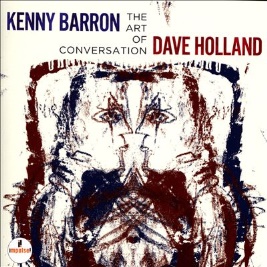
As a duo, they released several albums with outstanding musicians of different instruments, with double bassists Harvie S [Swartz] — Now Was the Time (Savant, 2008) and Witchcraft (Savant, 2013). With Dave Holland The Art of Conversation (Impulse!, 2014), which, as the title suggests, is a demonstration of musical dialogue that illuminates the listener through a repertoire that is half classic, half original by both interpreted with profound mastery, great rapport and expressiveness elegant and sober.
As a duet but with the vibraphonist Mark Sherman he published the suggestive Interplay (Chesky, 2015) and with the alto saxophone George Robert two albums in 2014 The Good Life and Coming Home .
Masterful is the piano dialogue maintained by Kenny Barron and Mulgrew Miller (died 2013) throughout three concerts held in 2005 (Marciac, France) and 2011 (Geneva and Zurich, Switzerland) and collected on the triple album entitled The Art of Piano Duo (Groovin’ High, 2019). The repertoire is an exhaustive sample of the range of the jazz canon.
Themes from the great American songbook, by famous composers such as Rogers, Hart, Jimmy Van Heusen or Johnny Burke, together with pieces by jazz legends such as Duke Ellington, Charlie Parker and, as always, the great Thelonious Monk. An admirable display of creative wisdom by two of the most outstanding pianists in the history of jazz.
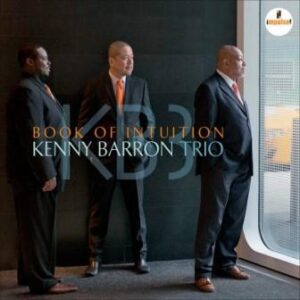
Once again, he met as a trio on albums such as Thrasher Dream Trio (Whailing City Sound, 2013) led by double bassist Ron Carter and drummer Gerry Gibbs. Then together with bassist Kiyoshi Kitagawa and drummer Johnathan Blake on Book of Intuition (Impulse!, 2016), nominated for a Grammy for best instrumental album, in which it is the first record with the trio that he has led for the last decade and an example of his skill and skill in the difficult art of this format.
The album includes ten tracks, seven originals by Barron, two by Monk and one by bassist Charlie Haden. And also as a trio with Dave Holland and Johnathan Blake, he released Without Deception (Dare 2 Records, 2020) with a repertoire of originals by Barron and Holland, some classics and Monk’s unusual original “Worry Later”.
For Concentric Circles (Blur Note, 2018) he expanded the trio to a quintet by adding trumpeter Mike Rodríguez and saxophonist Dayna Stephens to his usual rhythm section (Kitagawa and Blake). The album includes eight originals, a Brazilian song and the Monkian reference “Reflections”. Music that borders on the borders of bop with traces of Afro-Latin and Brazilian rhythms, performed with his singular and distinctive elegance.
And among other collaborations, he put his piano on albums by vocalists such as Claire Martin —Too Much in Love to Care (2012)—, as well as on Patty Lomuscio’s second album Stars Crossed Lovers (Challenge, 2022), in which the alto saxophone Vincent Herring, bassist Peter Washington and drummer Joe Fansworth.
The Source (Artwork, 2023) solo piano, his recent album —commented on previously— can be considered a special celebration of his 80th birthday but above all a masterpiece and angular piece that closes the circle of a long and intense creative process.
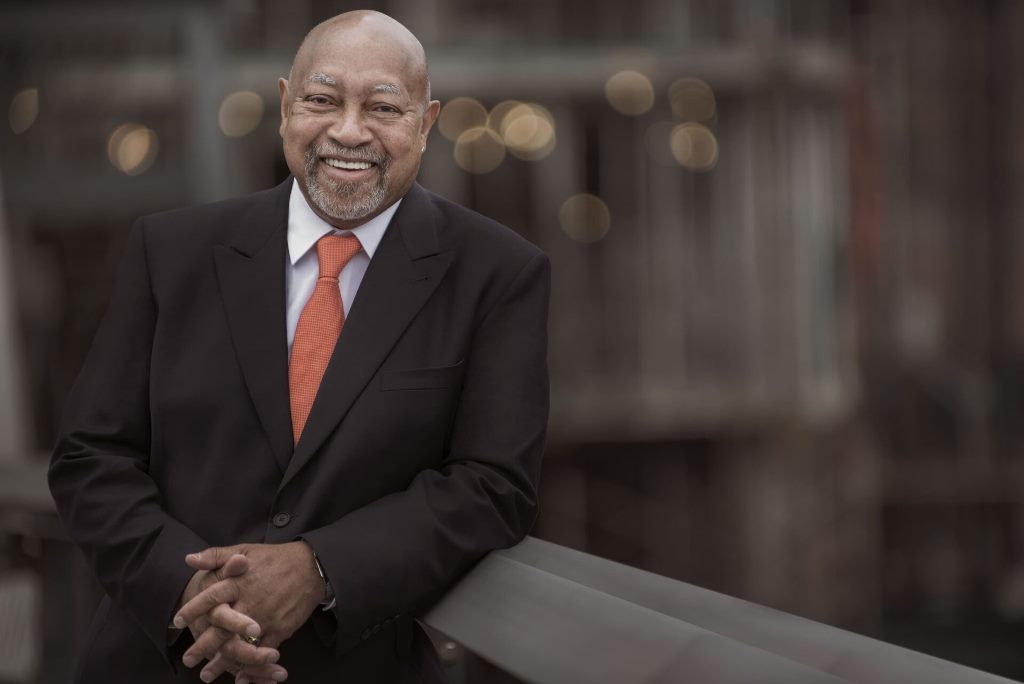
A long and fruitful journey in search of his own path, which Kenny Barron himself defined in 2015 in an interview by Michael J. Westa for Jazz Times :
“I’m still looking for it! I’m serious! I’m closer, but I’m still trying to find it. Someone once said that music is a journey, and it’s an endless journey. And you never want to get there. If you arrive, it’s over.”
Process and learning journey of a teacher whose secret is apparently simple:
«I have always looked for better musicians than me, who have a high level, it is the best way to learn, and that is how I transmit it to my students, who look for motivating collaborations. I need to get out of the comfort zone and that’s the best way to do it, taking risks, and I’m still at it. 2021 interview by A. Naranjo for the Granada Hoy newspaper on the occasion of the Jazz festival in La Costa de Almuñécar.
A musical journey unanimously recognized both by the many musicians with whom he has collaborated and by cultural institutions and specialized critics: Jazz Master by the NEA (National Endowment For The Arts), member of the American Academy of Arts and Sciences, member American Jazz Hall of Fame inductee, Honorary Doctor of SUNY Empire State and Berklee College of Music, Living Legacy Mid-Atlantic Arts Foundation Award, MAC Lifetime Achievement Award.
He has received twelve Grammy Award nominations and has won critics’ and readers’ polls from prestigious publications such as DownBeat , Jazz Times and Jazziz . And he has received the award for Best Pianist from the Association of Jazz Journalists seven times, the last in 2017.
And a musical career that bears certain parallels with that of other great pianists, for example, Hank Jones or Tommy Flanagan: he has worked with many musicians and from different musical aesthetics, adapting in each case with proverbial ability.
In essence, and according to his own words, «basically, I am a bebop interpreter », a style that has been refined and matured since his initial influence from Bud Powell —he manifests himself in the original “Bud-Like” included in At the Piano (1982). , his first solo piano album but also with the lyricism and elegant touch of Tommy Flanagan and the taste for harmonies and abstractions of Thelonious Monk that would become a sort of personal hallmark.
Generous educator
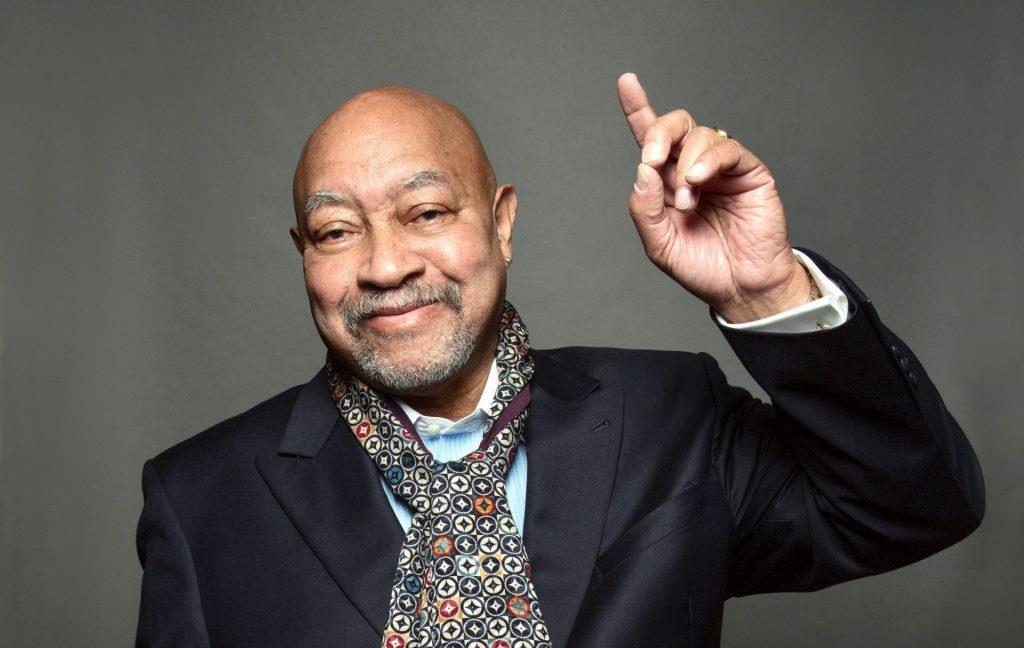
Even before giving classes in a regulated way in prestigious centers, he served as a generous educator in the day-to-day life of his bands in which he welcomed young talents. A way of returning the opportunity that he had when James Moody recommended Dizzy Gillespie: «I like to do that when I listen to a young man who really knows how to play. Because someone gave me that opportunity when I was young. So if I can pay that payment back, I’d love to be able to do it.”
In 1974 he entered Rutgers University (New Jersey) as a professor of piano and harmony where he had current talents as students, among others, the trumpeter Terence Blanchard, the saxophonists David Sánchez and Harry Allen or the singer Regina Belle. At the end of 1999 he left Rutgers University and entered the School of Music of Manhattan where he had outstanding students such as pianists Aaron Parks and Gerald Clayton. He currently practices at New York’s Juilliard School, where he advises numerous musicians.
About the teaching system at Juilliard:
«What we did was play. We played standards, we played all kinds of repertoire, we played some of their music, because they brought original music. And for me, it was about listening to them and seeing what their weaknesses were. Was it his way of playing? Did they play too much? Were they lyrical? Those kinds of things. Just finesse. I couldn’t teach them to play, they already knew how to play. It was just finesse.” Peter Hum, Ottawa Citizen (06.20.2017)
| Artist or Composer / Score name | Cover | List of Contents |
|---|---|---|
| Pink Floyd – Wish You Were Here Guitar Arr. (Musescore File).mscz | ||
| Pink Floyd – Wish You Were Here Guitar Arr. With Tabs |
 |
|
| Pink Floyd – Wish You Were Here Guitar Arr. With Tabs (Musescore File).mscz | ||
| Pink Floyd (The Dark Side Of The Moon) Guitar Rock Play Along Vol. 68 (PDF + MP3 audio tracks) with Tablature |
 |
Guitar Play-Along Volume 68 – Pink Floyd Pink_Floyd_Dark_Side_Of_The_Moon |
| Pink Floyd Acoustic Guitar Collection with Tablature |
 |
|
| Pink Floyd Album By Album (Popoff, Martin) Book |
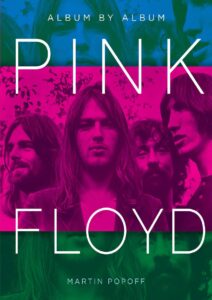 |
|
| Pink Floyd All the Songs The Story Behind by Guesdon, Jean-Michel Margotin, Philippe (Book) |
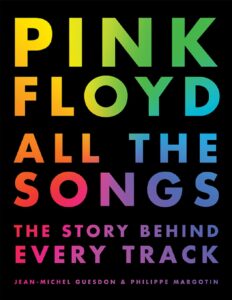 |
|
| Pink Floyd Animals Piano Vocal Chords Songbook |
 |
Pink Floyd Animals Piano Vocal Chords Songbook |
| Pink Floyd Back Stage A Momentary Lapse Of Reason (BOOK) Biography |
 |
|
| Pink Floyd Classics (Pink Floyd) Guitar TABs Play Along with MP3 audio tracks download |
 |
Pink Floyd Classics (Pink Floyd) Guitar TABs Play Along with MP3 audio tracks download |
| Pink Floyd Early Classics – Guitar Signature Licks with MP3 audio Play Along with Tablature |
 |
Pink Floyd Early Classics – Guitar Signature Licks with MP3 audio Play Along |
| Pink Floyd Guitar Chord Songbook Floyd Pink Sheet Music 30 songs |
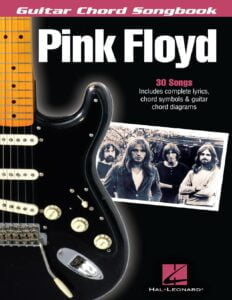 |
Pink Floyd Guitar Chord Songbook Floyd Pink Sheet Music |
| Pink Floyd Guitar Tab |
 |
Pink Floyd Guitar Tab |
| PINK FLOYD Pigs Might Fly The Inside Story Of Pink Floyd By Mark Blake (Book) |
 |
|
| Pink Floyd Songbook – Pink Floyd (Easy Guitar with Riffs and Solos) with Tablature |
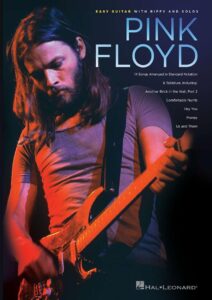 |
Pink Floyd Songbook – Pink Floyd (Easy Guitar with Riffs and Solos) |
| Pink Floyd The Final Cut Songbook |
 |
|
| Pink Floyd The Great Gig in the Sky | Pink Floyd The Great Gig in the Sky | |
| Pink Floyd The Pink Floyd Song Book (Guitar) |
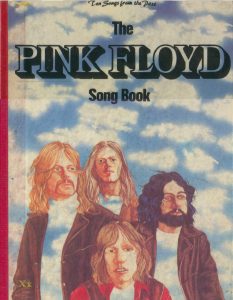 |
The Pink Floyd Song Book (Guitar)_compressed |
| Pink Floyd Wish You Were Here (Guitar Tablature edition songbook) |
 |
Pink Floyd Wish You Were Here (Guitar Tablature edition songbook) |
| Pink Floyd Wish You Were Here (piano vocal songbook) |
 |
Pink Floyd Wish You Where Here |
| Pink Greatest Hits So Far Piano Vocal Guitar |
 |
Pink Greatest Hits So Far Piano Vocal Guitar |
| Pink Martini – Lullaby |
 |
|
| Pink Panther – The Pink Panther Theme | ||
| Pink_Floyd Wish_You_Were_Here (Piano Solo) (Musescore file).mscz | Musescore File | |
| Pino Calvi – Accarezzame |
 |
|
| Pino Daniele Antologia Spartiti |
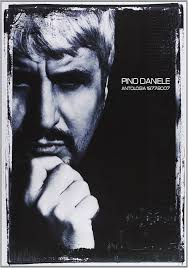 |
|
| Pinocchio – When You Wish Upon a Star (music from the film) Easy Piano Solo arr. sheet music | Pinocchio – When You Wish Upon a Star (music from the film) Easy Piano Solo arr. sheet music | |
| Pinocchio Fiorenzo Carpi Tema Di Geppetto Le Aventure Di Pinocchio |
 |
|
| Pinocchio sheet music soundtrack (Dario Marianelli) |
 |
|
| Pinocchio Theme |
 |
|
| Pinocchio, Le Canzoni Leigh Harline |
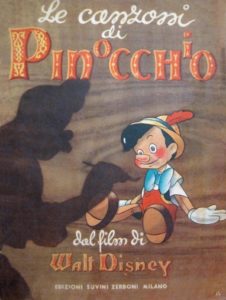 |
Pinocchio Le Canzoni Di – Leigh Harline |
| Piovani ”La vita e bella” (Life is beautiful) Screen Music, full score |
 |
|
| Pirates Of The Caribbean – Hes A Pirate – Klaus Badelt | ||
| Pirates of the Caribbean – Klaus Badelt Concert Band Medley |
 |
Pirates of the Caribbean – Klaus Badelt Concert Band Medley |
| Pirates Of The Caribbean – Moonlight Serenade – Klaus Badelt | Pirates-Of-The-Caribbean-Moonlight-Serenade-Klaus-Badelt | |
| Pirates Of The Caribbean – The Medallion Calls – Klaus Badelt | ||
| Pirates of the Caribbean – The Medallion Calls Klaus Badelt (Piano solo sheet music) |
 |
|
| Pirates Of The Caribbean As Jarrod Radnich Virtuosic Piano Solo (Klaus Badelt) | Pirates Of The Caribbean As Jarrod Radnich Piano Solo (Klaus Badelt) | |
| Pirates Of The Caribbean Medley (Klaus Badelt) |
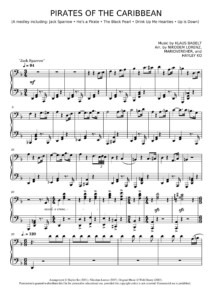 |
|
| Pirates Of The Carribean – Davy Jones – Hans Zimmer | ||
| Pirates Of The Carribean – The Medallion Calls – Klaus Badelt | ||
| Pirotte, Gilles – Piano transcriptions in Modernen Styl | Pirotte, Gilles – Pianotranscriptions in Modernen Styl | |
| Pischna – Technical Studies 60 Progressive Exercises | ||
| Pischna – The Little Pischna, 48 Practice Pieces | ||
| Piston, Walter – Counterpoint (1947) |
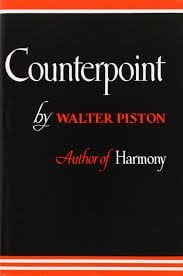 |
|
| Piston, Walter – Harmony (1941) |
 |
|
| Piston, Walter Orchestration (1955) |
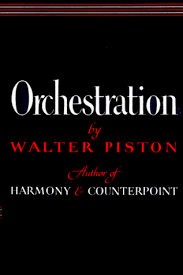 |
|
| Pitch Perfect Songbook Music from the Motion Picture Soundtrack – Anna Kendrick sheet music |
 |
Pitch Perfect Songbook Music from the Motion Picture Soundtrack – Anna Kendrick sheet music |
| Più su (Renato Zero) | ||
| Pixies Where Is My Mind (piano vocal sheet music) arr. Maxence Cyrin |
 |
|
| Pixinguinha, O Melhor de – Songbook (Guitar) |
 |
Pixinguinha, O Melhor de – Songbook (Guitar) |
| Pizzarelli, John – World on a string – a musical memoir (Book) |
 |
|
| Placebo The Singles (Guitar with Tablature) |
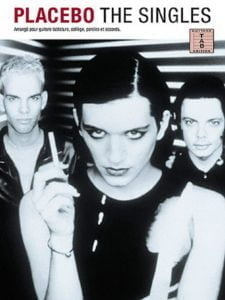 |
Placebo The Singles (Guitar) |
| Places of the Heart (The Survivors) | ||
| Plaidy Technical Studies Klauser (1875-1903) |
 |
|
| Plain White Ts – Hate | ||
| Plain White Ts – Hey There Delilah | ||
| Plaisir d’Amour Florian-Martini |
 |
|
| Play Acoustic Guitar – The Complete Guide to Mastering Acoustic Guitar Styles [Dave Hunter 2005) with Tablature |
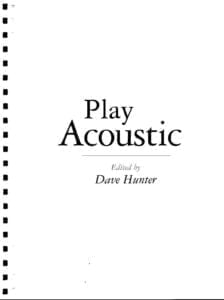 |
Play acoustic guitar |
| Play Along Blues By The Bar with MP3 audio tracks Chris Hunt (Guitar) |
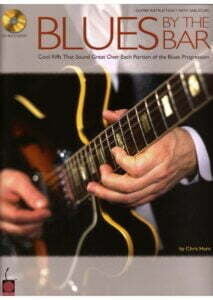 |
Play Along Blues By The Bar with MP3 audio tracks Chris Hunt – |
| Play Alto Sax Today – Level 1 Method book plus audio MP3 tracks |
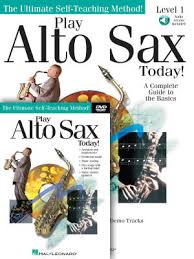 |
|
| Play Alto Sax Today – Level 2 Method book plus audio MP3 tracks |
 |
|
| Play Blues Guitar – Jurgen Kumlehn (German-Deutsch) WITH AUDIO MP3 |
 |
Play Blues Guitar |
| Play Guitar With Chuck Berry With Mp3 Audio Tracks with Tablature |
 |
play guitar with chuck berry |
| Play Guitar With – Bob Dylan – with MP3 audio tracks with Tablature |
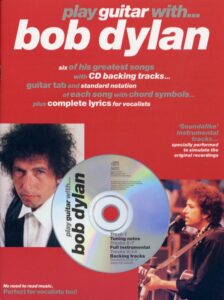 |
Play Guitar With – Bob Dylan – with MP3 audio tracks |
| Play Guitar With – Jeff Buckley with audio MP3 with Tablature |
 |
Play Guitar With – Jeff Buckley with audio MP3 |
| Play Guitar With B.B. King (with audio MP3) with Tablature |
 |
Play Guitar With B.B. King |
| Play Guitar with Bryan Adams (with AUDIO MP3) with Tablature |
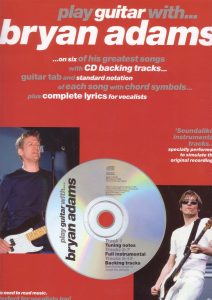 |
Bryan Adams |
| Play Guitar with U2 1980-1983 (with AUDIO MP3) with Tablature |
 |
U2 1980-1983 |
| Play Guitar with U2 1984-1987 (with AUDIO MP3) with Tablature |
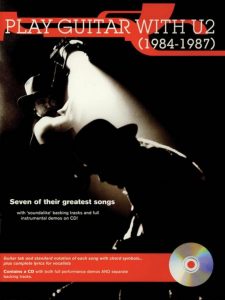 |
U2 1984-1987 |
| Play It Again Piano The Perfect Way To Rediscover The Piano Book 1 by Melanie Spanswick |
 |
Play It Again Piano The Perfect Way To Rediscover The Piano Book 1 by Melanie Spanswick |
| Play It Again Piano The Perfect Way To Rediscover The Piano Book 2 by Melanie Spanswick |
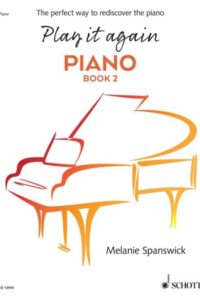 |
Play It Again Piano The Perfect Way To Rediscover The Piano Book 2 by Melanie Spanswick |
| Play It Again Piano The Perfect Way To Rediscover The Piano Book 3 by Melanie Spanswick |
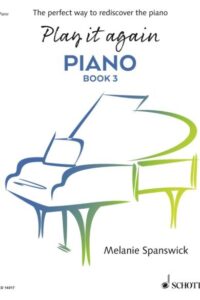 |
|
| Play Piano in a Flash PDF and Audio Examples MP3 by Scott The Piano Guy Houston |
 |
Play Piano in a Flash! |
| Play Piano With Corinne Bailey Rae, Rihanna, Norah Jones, Diana Krall, and more (with AUDIO MP3) |
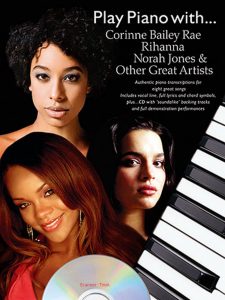 |
Play Piano with Corinne Bailey Rae |
| Play Piano With John Lennon, Queen, David Bowie, Lou Reed, Paul Mccartney, The Doors, Elton John And Simon & Garfunkel (Book+audio tracks)) |
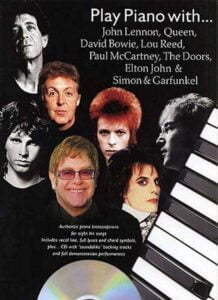 |
Play Piano With John Lennon, Queen, David Bowie, Lou Reed, Paul Mccartney, The Doors, Elton John And Simon And Garfunkel (Book+audio tracks)) |
| Play Piano With Paul McCartney (with AUDIO MP3) |
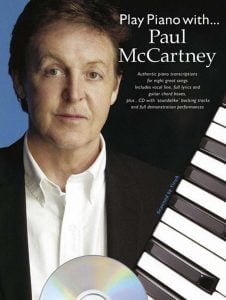 |
Play Piano With Paul McCartney |
| Playing Changes Jazz For The New Century by Nate Chinen (Book) |
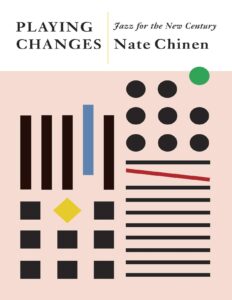 |
|
| Playing Guitar Like A Pro Lead, Solo, And Group Performance (Colin Mcallister) Guitar TABs |
 |
Playing Guitar like a Pro_ Lead, Solo, and Group Performance |
| Playing Love – E. Morricone (Musescore File).mscz | ||
| Playing The Piano For Pleasure The Classic Guide To Improving Skills Through Practice And Discipline By Charles Cooke Book |
 |
|
| Playtime Piano Disney Level 1 (Nancy Faber, Randall Faber) Sheet Music |
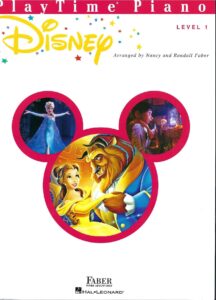 |
Playtime Piano Disney Level 1 (Nancy Faber, Randall Faber) Sheet Music |
| Plein Soleil (Purple Noon) Nino Rota | ||
| Plus que ma propre vie – Breaking Dawn 2 OST (Carter Burwell) | ||
| Pocachontas – The Colors Of Wind | ||
| Pocahontas – The Colors Of Wind | Michael-Nyman Diary-of-Love The-end-of-the-affair | |
| Pocahontas Songbook |
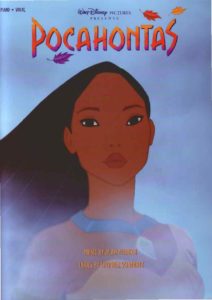 |
Pocahontas Songbook |
| Pogues – Fairytale of New York (2 versions) | Pogues – Fairytale of New York (2 versions) | |
| Pogues The Best of The Pogues Piano Vocal guitar Songbook |
 |
Pogues The Best of The Pogues Piano Vocal guitar Songbook |
| Poirot – Five Little Pigs (Christopher Gunning) | ||
| Poirot – The Hollow (Christopher Gunning) | ||
| Poirot – Vera Rossakoff Theme – The Double Clue Christopher Gunning |
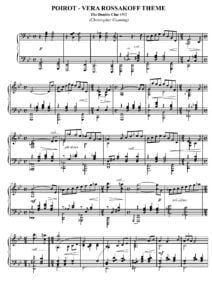 |
|
| Pokemon – Gotta Catch ’em all |
 |
|
| Pokemon Black And White OST Route 10 Game sheet music pdf |
 |
|
| Pokemon Black Version Pokemon White Version – Lacunosa Town |
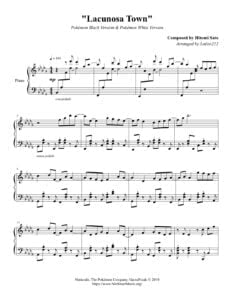 |
|
| Pokemon BW – Driftveil City |
 |
|
| Pokemon Gold and Silver New Bark Town by Junichi Masuda Piano Solo |
 |
|
| Pokemon Heartgold Soulsilver Ost National Park Game sheet music pdf |
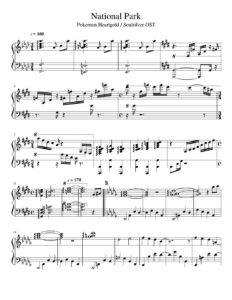 |
|
| Pokemon Piano Solo arr. | Pokemon Piano Solo arr. | |
| Pokemon Theme For Piano Easy |
 |
|
| Pokémon Theme Song Piano Solo (Musescore File).mscz | ||
| Polar Express – Believe Sheet Music Josh Groban Sheet Music |
 |
|
| Polka Dots and Moonbeams (J. Van Heusen) |
 |
|
| Polka Dots And Moonbeams (Jazz Standard) Jimmy Van Heusen (Musescore File).mscz | ||
| Polka Dots And Moonbeams Jazz Standards | Polka Dots And Moonbeams Jazz Standards | |
| Polyrhythms The Musicians Guide (Peter Magadini) Book |
 |
|
| Pop and Rock for classical guitar, Best of by Joao Fuss with Tablature Book + MP3 Audio Play Along (embedded) |
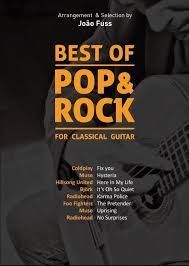 |
Pop and Rock for classical guitar, Best of by Joao Fuss with Tablature Book + MP3 Audio Play Along (embedded) |
| Pop And Rock, The Cambridge Companion To Pop And Rock (Book) |
 |
|
| Pop Divas Of The New Millenium |
 |
Pop Divas Of The New Millenium 313pages |
| Pop Folk Songs Songbook, The Most Requested – sheet music |
 |
Pop Folk Songs Songbook, The Most Requested – sheet music |
| Pop Hits – Instant Piano Songs Simple Sheet Music (Audio MP3 Play Along inc.) |
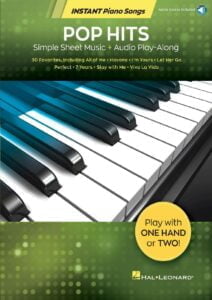 |
Pop Hits – Instant Piano Songs Simple Sheet Music (Audio MP3 Play Along inc.) |
| Pop Hits Fur Klassische Gitarre with TABs and Guitar chords |
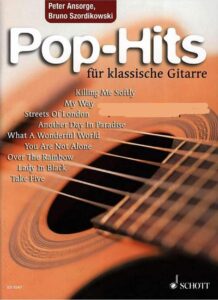 |
Pop Hits Fur Klassische Gitarre with TABs |
| Pop Hits Transcriptions For Solo Guitar with Tablature |
 |
Pop Hits Transcriptions For Solo Guitar |
| Pop Keyboard Library By Dan Coates |
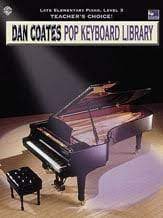 |
Pop Keyboard Library By Dan Coates |
| Pop Piano (Metodo Per Lo Studio Del Pianoforte Moderno Spartiti) |
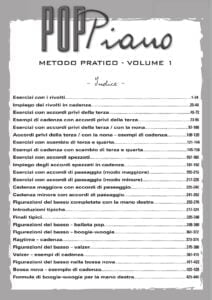 |
|
| Pop Piano Book, The By Mark Harrison |
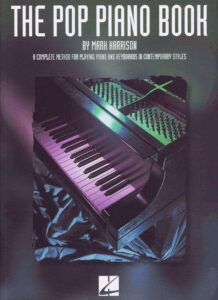 |
Pop Piano Book, The By Mark Harrison |
| Pop Rock Anthology (Songbook) with guitar chords |
 |
Pop Rock Anthology (Songbook) with guitar chords |
| Pop Sheet Music Collection, The Ultimate – 81 Great Covers |
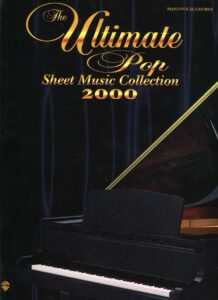 |
Pop Sheet Music Collection, The Ultimate – 81 Great Covers |
| Pop Songs In A Classical Sytle Piano Solo |
 |
Pop Songs In A Classical Sytle Piano Solo |
| Pop Songs Of All Time, The Very Best Piano Vocal Guitar Chords |
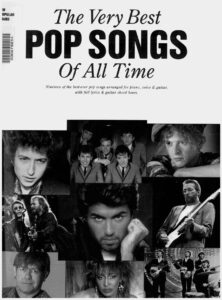 |
Pop Songs Of All Time, The Very Best Piano Vocal Guitar Chords |
| Pop Standards – Super Easy Songbook |
 |
Pop Standards – Super Easy Songbook |
| Pop Standards Jazz Piano Solos Series Volume 41 |
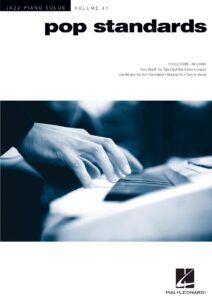 |
Pop Standards Jazz Piano Solos Series Volume 41 |
| Pop, Rock, Jazz for Classical Guitar Arrangements by Igor Bartholomew |
 |
|
| Poppy Ackroyd – Birdwoman |
 |
|
| Poppy Ackroyd – Strata |
 |
|
| Popular Christmas Sheet Music -1940-1979 |
 |
Popular Christmas Sheet Music -1940-1979 |
| Popular Christmas Sheet Music–1980-2017 |
 |
Popular Christmas Sheet Music–1980-2017 |
| Popular Classics Of The Great Composers arr. for Classical Guitar Vol. 1 for all levels by Jason Waldron |
 |
Popular Classics Of The Great Composers arr. for Classical Guitar Vol. 1 for all levels by Jason Waldron |
| Popular Classics Of The Great Composers arr. for Classical Guitar Vol. 2 for all levels by Jason Waldron |
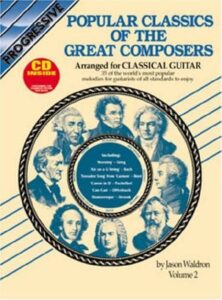 |
Popular Classics Of The Great Composers arr. for Classical Guitar Vol. 2 for all levels by Jason Waldron |
| Popular Classics Of The Great Composers arr. for Classical Guitar Vol. 3 for all levels by Jason Waldron |
 |
Popular Classics Of The Great Composers arr. for Classical Guitar Vol. 3 for all levels by Jason Waldron |
| Popular Classics Of The Great Composers arr. for Classical Guitar Vol. 4 for all levels by Jason Waldron |
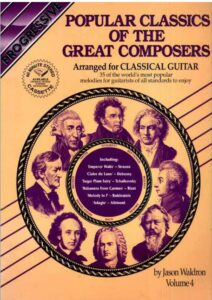 |
Popular Classics Of The Great Composers arr. for Classical Guitar Vol. 4 for all levels by Jason Waldron |
| Popular Piano Solos – Book 7 – Blues |
 |
Popular Piano Solos – Book 7 – Blues |
| Popular Piano Solos – Book 8 – Jazz |
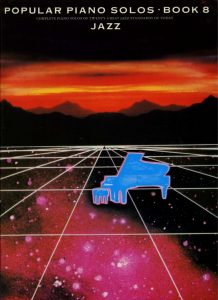 |
Popular Piano Solos – Book 8 – Jazz |
| Popular Piano Solos – Level Three for all piano methods |
-218x300.jpg) |
Popular Piano Solos Book 3 |
| Popular Piano Solos Book 10 |
 |
Popular Piano Solos Book 10 |
| Popular Piano Solos Book 1 |
 |
Popular Piano Solos Book 1 |
| Popular Piano Solos Book 2 |
 |
Popular Piano Solos Book 2 |
| Popular Piano Solos Book 3 |
 |
Popular Piano Solos Book 3 |
| Popular Piano Solos Book 6 |
 |
Popular Piano Solos Book 6 |
| Popular Piano Solos For All Piano Methods – Level 2 (Bill Boyd) |
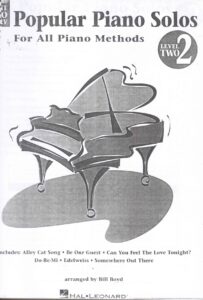 |
Popular Piano Solos For All Piano Methods – Level 2 (Bill Boyd) |
| Popular Piano Solos Pop Hits, Broadway, Movies And More Grade 2 John Thompson Modern Course |
 |
Popular Piano Solos Pop Hits, Broadway, Movies And More Grade 2 John Thompson Modern Course |
| Popular Piano Solos. Pop Hits, Broadway, Movies And More Grade 5 John Thompson Modern Course |
 |
Popular Piano Solos. Pop Hits, Broadway, Movies And More Grade 5 |
| Popular Sheet Music – 30 Hits From 2015-2017 Easy Piano (Piano, vocal, Guitar chords) |
 |
Popular Sheet Music – 30 Hits From 2015-2017 Easy Piano |
| Popular Sheet Music 30 Hits from 2014-2016 |
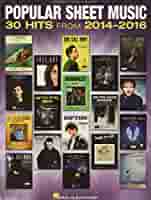 |
Popular Sheet Music 30 Hits from 2014-2016 |
| Por una Cabeza (Carlos Gardel) | ||
| Por Una Cabeza (Tango) (Musescore File).mscz | ||
| Porco Rosso (Intro) Jose Hisaishi (Abrsm Piano Grade 8) Musescore File.mscz | ||
| Portman, Rachel – The Cider House Rules | Portman, Rachel – The Cider House Rules | |
| Post-Bop Jazz Piano by John Valerio |
 |
Post-Bop Jazz Piano by John Valerio |
| Poster (Claudio Baglioni) |
